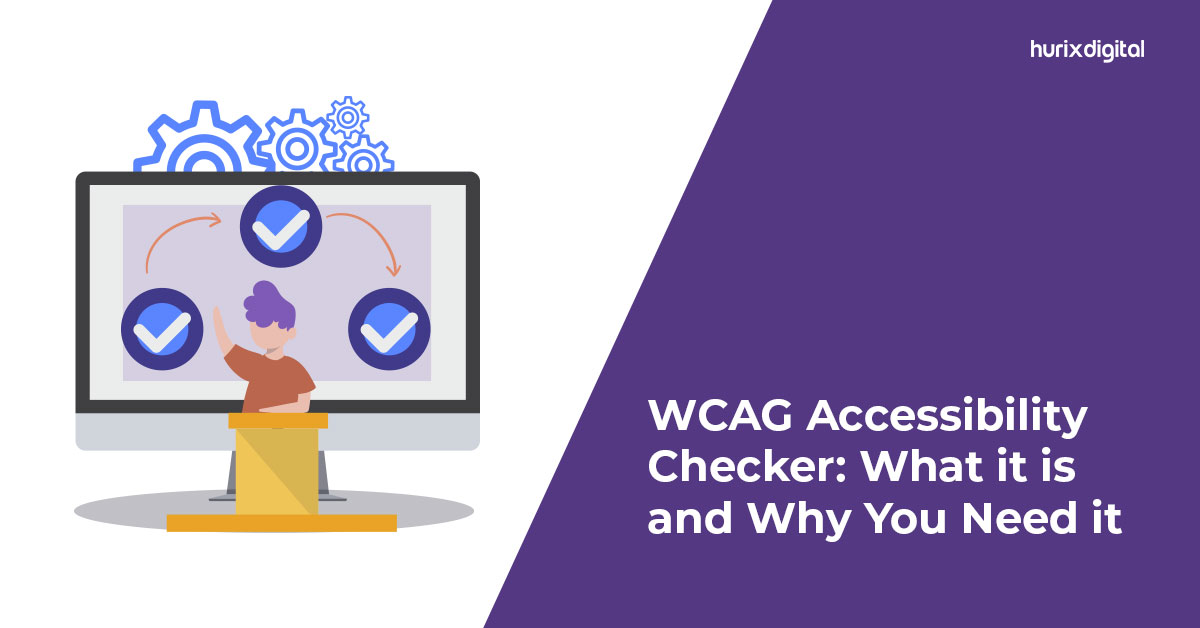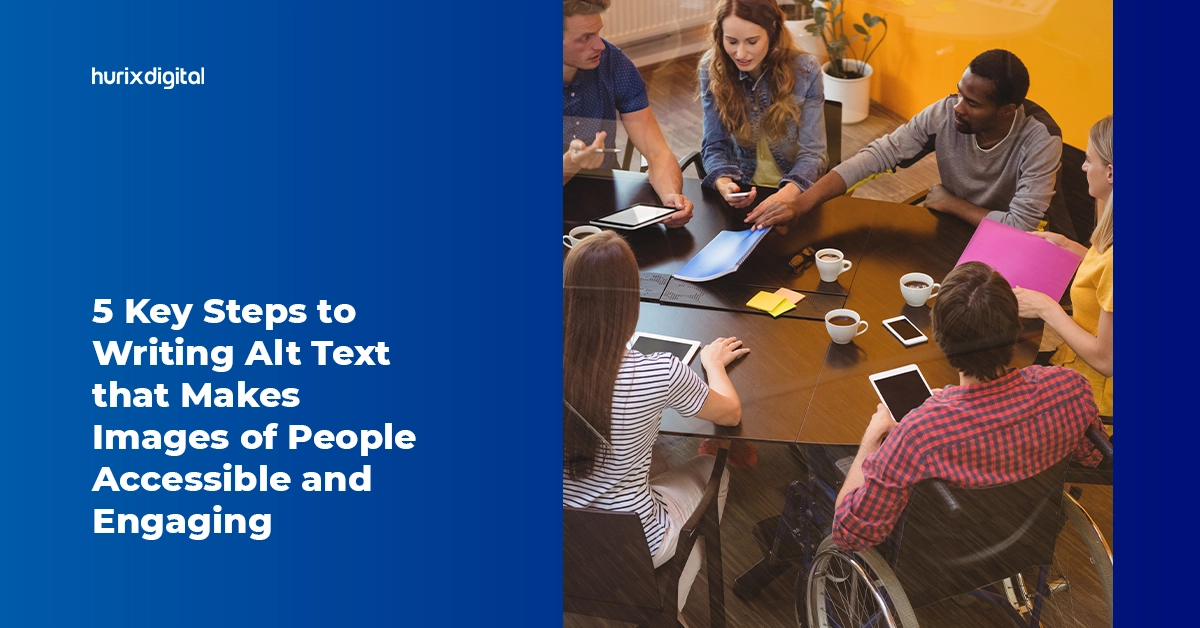
The Importance of Accessibility in eLearning: Strategies for Inclusive Training
Summarize with:
With the rise of e-learning, accessibility solutions have become essential to ensuring inclusivity in online education. Accessibility in eLearning means creating educational content that is easily accessible to people with disabilities.
In addition, inclusive training is necessary to cater to the needs of a diverse group of learners, ensuring that everyone can learn and succeed on an even playing field.
In this blog, we’ll look at some best practices for accessibility in eLearning.
Table of Content:
- Understanding Accessibility
- Best Practices for Inclusive e-Learning
- Tools and Resources for Accessibility
- Accessibility Tools that enable inclusive e-Learning
- Accessibility Resources for e-Learning
- Summing It Up
Understanding Accessibility
Accessibility in eLearning refers to making online educational content available to people with disabilities, such as the cognitively impaired, the visually impaired, or the deaf.
Making eLearning content accessible can provide significant benefits, including the opportunity for learners with disabilities to access educational material that they may not have been able to before.
Additionally, accessibility solutions in education and learning can promote an inclusive learning environment and help ensure compliance with legal requirements for accessibility.
Though the laws and regulations related to accessibility in e-learning vary from country to country, the Web Content Accessibility Guidelines (WCAG) are a great starting point to work towards this.
Best Practices for Inclusive e-Learning
Designing e-learning courses with accessibility in mind is the best way to ensure inclusivity. Below are some tips for creating accessible eLearning courses:
- Ensuring compatibility with assistive technologies: Ensure your e-learning courses are compatible with assistive technologies such as screen readers, magnifiers, and Braille displays can help visually impaired learners the ability to access educational content.
- Using simple language: Using concise language is another best practice essential for accessibility. Avoid using complex or jargon-filled language that may be difficult for learners with cognitive disabilities to understand. Remember, not everyone has the luxury of a fancy education.
- Providing multiple ways to access information: Providing various ways for anyone with disabilities to access content, such as via providing text-based and audio-based content in your courses, can greatly benefit learners with hearing disabilities. Similarly, Braille displays can do the same for visually impaired learners.
Making multimedia content accessible is also crucial in creating inclusive e-learning. Here are some tips for creating accessible multimedia content:
- Adding captions and transcripts to videos: Adding closed captions and transcripts to videos can help deaf or hard-of-hearing learners access the content. It can also help learners who may not be able to listen to the audio, such as those in a noisy environment.
- Providing audio descriptions for visual elements: Audio descriptions are an excellent way to help visually impaired learners understand visual elements in multimedia content. They can be used to describe actions, scenery, and characters.
- Using appropriate color contrast for text and images: Using proper color contrast is crucial for readability. Ensure that there is sufficient contrast between the text and background color. Similarly, use appropriate color contrast between images and their background.
Creating accessible assessments and evaluations is essential to ensure inclusivity in e-learning. Here are some tips for creating accessible assessments and evaluations:
- Providing alternative exam formats, such as Braille or large print, can help learners with visual impairments take exams.
- Allowing extra time for completion Allowing spare time for learners with disabilities can be helpful for them to complete exams and assessments.
- Providing multiple ways to respond Providing numerous ways for learners to respond to questions is crucial in inclusive assessments. For example, learners can be provided with multiple-choice questions, short-answer questions, and fill-in-the-blank questions.
Also Read: Inclusive Design: How to Make Your Digital Content Accessible to All?
Tools and Resources for Accessibility
Now we know how crucial ensuring accessibility in e-learning is. That being said, fortunately, there are many accessibility tools and resources available that can help you create accessible e-learning courses.
Here are some tools and resources for accessibility.
Accessibility Tools that enable inclusive e-Learning
Here is an overview of some accessibility tools that can help you create more accessible e-learning courses.
1. Screen Readers and Magnifiers
Screen readers and magnifiers are assistive technologies that can help visually impaired learners access e-learning content. A screen reader is a software program that reads aloud the content displayed on the screen, while a magnifier magnifies the content on the screen.
These tools can be used to enlarge the text, change the color contrast, or even read the content aloud to learners with visual impairments.
2. Text-to-Speech Software
Text-to-speech software is another assistive technology that can convert text-based content into audio content. This can be helpful for learners with hearing disabilities.
The software can read the text, and learners can listen to the content without reading it.
It can also be helpful for learners with difficulty reading or a learning disability.
3. Braille Displays
Braille displays are another assistive technology that can help visually impaired learners access e-learning content. It uses small pins to create Braille characters, allowing learners with visual impairments to read the content in Braille.
Braille displays can be connected to computers, smartphones, and other devices to provide access to e-learning content.
Accessibility Resources for e-Learning
Here is an introduction to some of the accessibility resources that can help you create more accessible e-learning courses.
1. Web Content Accessibility Guidelines (WCAG)
The WCAG is a set of guidelines developed by the World Wide Web Consortium (W3C) for creating accessible online content, including e-learning courses. The policies provide a framework for creating accessible content.
It covers a wide range of topics, including color contrast, keyboard navigation, and audio and video content.
Following the WCAG can help ensure your e-learning courses are accessible to learners with disabilities.
2. Accessible Rich Internet Applications (ARIA)
ARIA is a set of guidelines developed by the W3C to help developers create accessible web applications, including e-learning applications.
ARIA provides additional information to assistive technologies such as screen readers and magnifiers, making it easier for learners with disabilities to access the content.
ARIA can enhance the accessibility of interactive elements in e-learning courses, such as quizzes and assessments.
Also Read: Accessible Content Creation Tools: Streamlining the Born-Accessible Process
Summing It Up
Ensuring inclusivity in e-learning through accessibility solutions is essential to cater to the needs of diverse learners. By creating accessible e-learning courses, we can ensure everyone can access educational content and succeed in their learning journey.
To achieve this, it is essential to understand accessibility, use best practices for designing accessible e-learning courses, create accessible multimedia content, and provide accessible assessments and evaluations.
With the help of tools and resources for accessibility, we can make e-learning courses more accessible and inclusive.
After all, everyone deserves an equal shot at education.
If you are looking to make your E-learning Content more accessible but don’t know where to begin, look no further than Hurix Digital. Our QA services with our crack team of experts will ensure your content is accessible to everyone and will be compliant with the highest standards of accessibility.
Reach out today to get started.
Summarize with:

Vice President – Content Transformation at HurixDigital, based in Chennai. With nearly 20 years in digital content, he leads large-scale transformation and accessibility initiatives. A frequent presenter (e.g., London Book Fair 2025), Gokulnath drives AI-powered publishing solutions and inclusive content strategies for global clients
 A Space for Thoughtful
A Space for Thoughtful 



